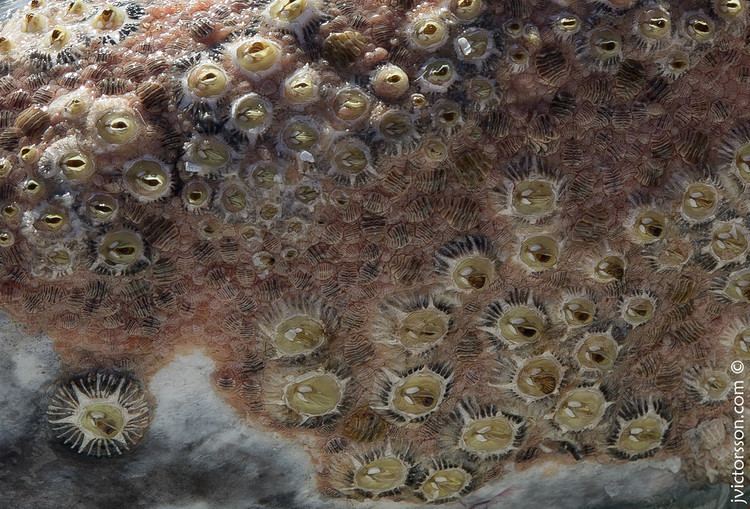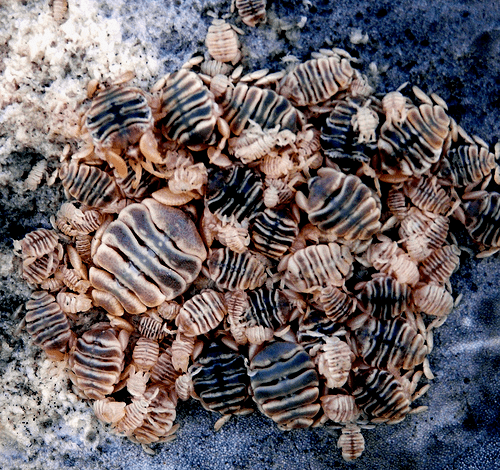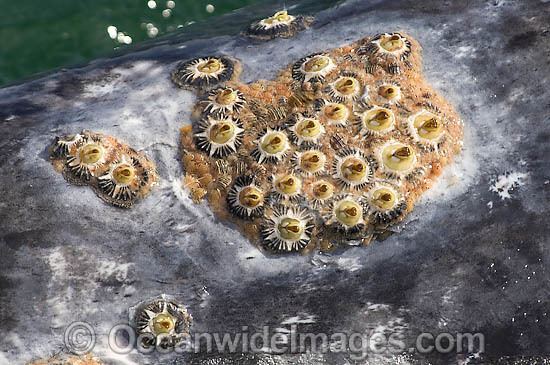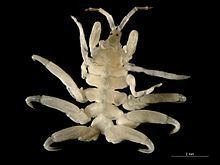Suborder Corophiidea Scientific name Cyamidae Order Amphipoda | Infraorder Caprellida Rank Family | |
 | ||
Similar Crustacean, Amphipoda, Cyamus boopis, Right whales, Whale barnacle | ||
A whale louse is a commensal crustacean of the family Cyamidae. Despite the name, they are not true lice (which are insects), but rather are related to the better-known skeleton shrimp, most species of which are found in shallower waters. Whale lice are external parasites, found in skin lesions, genital folds, nostrils and eyes of marine mammals of the order Cetacea. These include not only whales but also dolphins and porpoises.
Contents

Appearance

The body of a whale louse is distinctly flat and considerably reduced at the rear. Its legs, especially the back three pairs of legs, have developed into claw-like protuberances with which it clings to its host. Its length ranges from 5 to 25 millimetres (0.2 to 1 in) depending on the species.
Way of life

Most species of whale lice are associated with a single species of whale. They remain with their host throughout their development and do not experience a free-swimming phase. Although the relationship between a specific species of whale louse and a specific species of whale is more pronounced with baleen whales than with toothed whales, almost every species of whale has a louse species that is unique to it. With the sperm whale, the parasitic relationship is sex-specific. The whale louse Cyamus catodontis lives exclusively on the skin of the male, while Neocyamus physeteris is found only on females and calves.

Whale lice attach themselves to the host body in places that protect them from water currents, so they can be found in natural body openings and in wounds; with baleen whales they are found primarily on the head and in the ventral pleats. Around 7,500 whale lice live on a single whale.

With some species of whale lice, barnacle infestation plays an important role. On the right whale, the parasites live mainly on callosities (raised callus-like patches of skin on the whales' heads). The clusters of white lice contrast with the dark skin of the whale, and help researchers identify individual whales because of the lice clusters' unique shapes.
The lice predominantly eat algae that settle on the host's body. They usually feed off the flaking skin of the host and frequent wounds or open areas. They cause minor skin damage, but this does not lead to significant illness.
The development of the whale louse is closely connected with the life pattern of whales. The distribution of various lice species reflects migratory patterns.
Species
Currently, 31 species are recognised:
